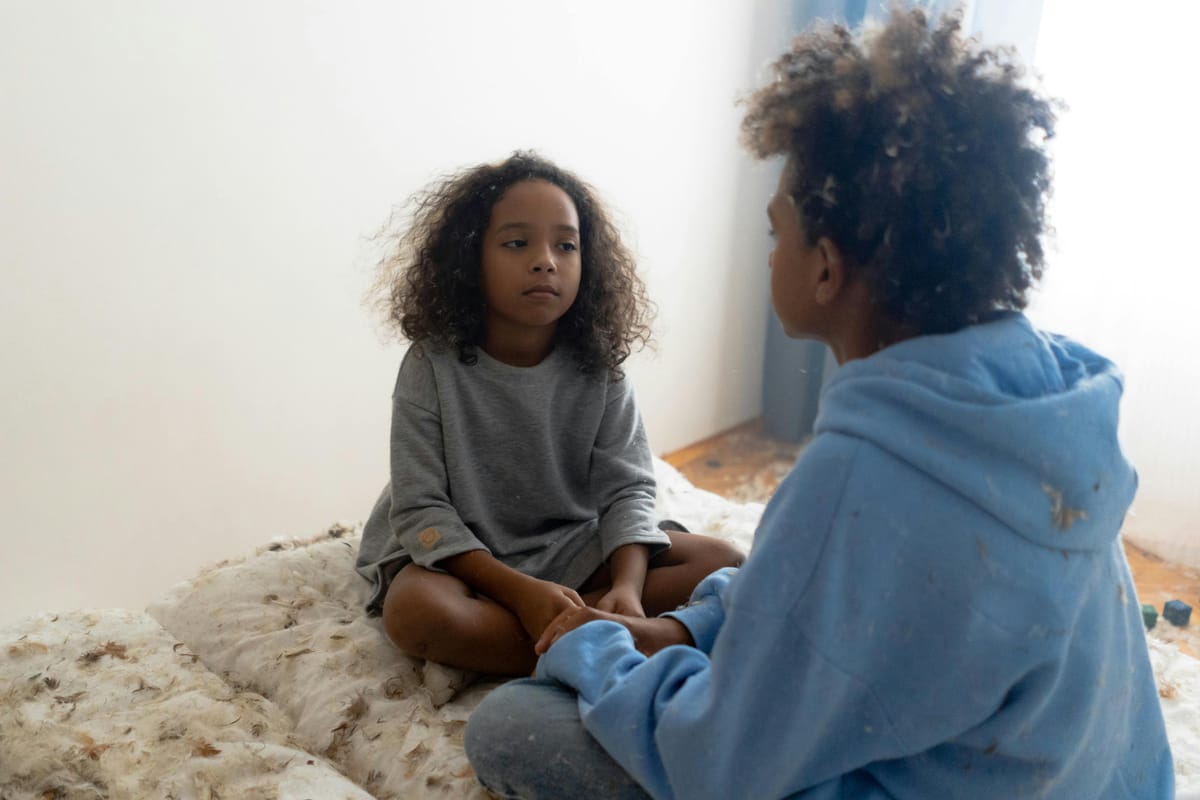Emotional Regulation & Co-Regulation Made Simple

The New Science of Soothing and Self-Control in Childhood
A majority of us grew up hearing “Stop crying!” or “Go to your room until you calm down.” For decades, children were expected to handle their emotions like miniature adults — expected to control anger, hide sadness, and “behave” as quickly as possible.
Today, science tells us something very different: young children cannot regulate their emotions alone. They learn to do it gradually, and only with help. That help has a name: co-regulation.
In this post, we’ll unpack what emotional regulation truly means, why it’s so hard for little ones, and how you can help build this vital skill from the ground up.
What Is Emotional Regulation?
Emotional regulation is the ability to manage and respond to emotions in a socially acceptable way. It doesn’t mean pushing feelings down or pretending not to be upset. It means riding the emotional wave without getting overwhelmed or hurting others.
In early childhood, emotional regulation is a period of learning to cope with frustration, sadness, or excitement in healthy ways, rather than reacting impulsively. Adults often forget this is a learned skill, not something kids are born knowing. A three-year-old who throws a toy or screams when told “no” isn’t being bad, but just being human. They don’t yet know how to react to overwhelming feelings.
The emotional regulation process starts with:
Recognition: “I’m feeling mad.”
Pause: “What can I do with this feeling?”
Action: “I can stomp my feet, ask for help, or take deep breaths.”
But toddlers don’t learn this on their own, and that’s where co-regulation comes in.
What Is Co-Regulation?
Co-regulation is when a calm, connected adult helps a child manage their emotional state. Think of it as emotional training wheels: children need them before they can ride solo.
Imagine your toddler having a meltdown in a grocery store. They’re overwhelmed and unable to process the chaos. When you kneel next to the child, make eye contact, speak softly, and say, “I see you’re upset. I’m here.” That’s co-regulation in action. No yelling or threatening needed! Children borrow your calm until they can develop their own.
Why “Calm Down!” Isn’t Enough
Telling a child to calm down without teaching them how is like handing them a bike with no wheels. It leads to confusion, shame, and emotional shutdown.
Instead, offer tools and your supportive presence:
- “Let’s take deep breaths together.”
- “You can stomp your feet here.”
- “Do you want a hug?”
- “Do you need some quiet time away from the noise?”
Repeated moments like these teach children what calming down looks like.
A Real-Life Example
Your 3-year-old Max wants candy at the checkout. You say “no,” and he screams, throwing himself on the floor. Here’s how you can guide him:
1️. Understanding Emotions: “You’re angry because you can’t have candy.”
2. Managing Emotions: Kneel beside him, breathe together, or offer a comfort object such as his favorite stuffed animal.
3. Appropriate Expression: Coach him: “You can say, ‘I’m mad,’ instead of screaming.”
4. Co-Regulation: Stay calm yourself. Your example teaches him how to soothe himself over time.
With repeated practice, Max will become more self-regulated, able to calm down faster, or even avoid meltdowns altogether.
Why It Matters: Positive & Negative Outcomes
Research suggests that children who develop strong emotional regulation skills are more successful throughout life 1,2.
Children who are emotionally regulated can:
- Wait patiently and adapt to changes.
- Solve problems and form positive relationships.
- Focus in class and manage frustration when learning.
- Express their needs confidently and appropriately.
Children who struggle with emotional regulation may:
- Frequently hit, bite, scream, or withdraw.
- Experience social struggles, low self-esteem, and academic difficulties.
How Do Children Learn Self-Regulation?
Self-regulation develops in stages:
- Dependence on Co-Regulation: Babies and toddlers need adults to soothe them.
- Shared Regulation: Preschoolers start using strategies they’ve learned, but still rely on caregivers.
- Independent Regulation: By early school age, children begin to manage their emotions independently.
This growth requires consistent modeling, safe relationships, patience, and practice3.
Easy Activities to Build Emotional Regulation
Here are practical ways to help your child develop these essential skills:
- Feelings Faces Chart – Make a chart with happy, sad, angry, and scared faces. Let your child point to what they’re feeling.
-Calm-Down Corner – Create a cozy space with pillows and books where your child can retreat to self-soothe.
-Emotion Books – Read stories about feelings and discuss the characters’ emotions.
-Deep Breathing Game – Blow bubbles together, focusing on slow, deep breaths.
-Emotion Charades – Take turns acting out feelings for each other to guess.
-Routine Check-Ins – Use moments like bedtime to discuss how your child felt during the day.
Remember: every meltdown is a learning opportunity, not a parenting failure!
❤️ Final Thoughts
Emotional regulation and co-regulation aren’t magic switches. Progress takes time. It’s a slow build with ups and downs, tears and triumphs. But with love, patience, and practice, you’re wiring your child’s brain for resilience.
Every time you stay calm, name feelings, and teach coping strategies, you are guiding your child's emotional growth. You are their anchor, their example, and their emotional GPS.
Footnotes
- Siegel, D. J., & Bryson, T. P. (2011). The Whole-Brain Child. Delacorte Press. ↩
- Center on the Developing Child, Harvard University. “Self-Regulation and Toxic Stress.” (2021). ↩
- Denham, S. A., et al. (2012). “Preschoolers’ emotional competence: Pathway to social competence?” Child Development Research. ↩